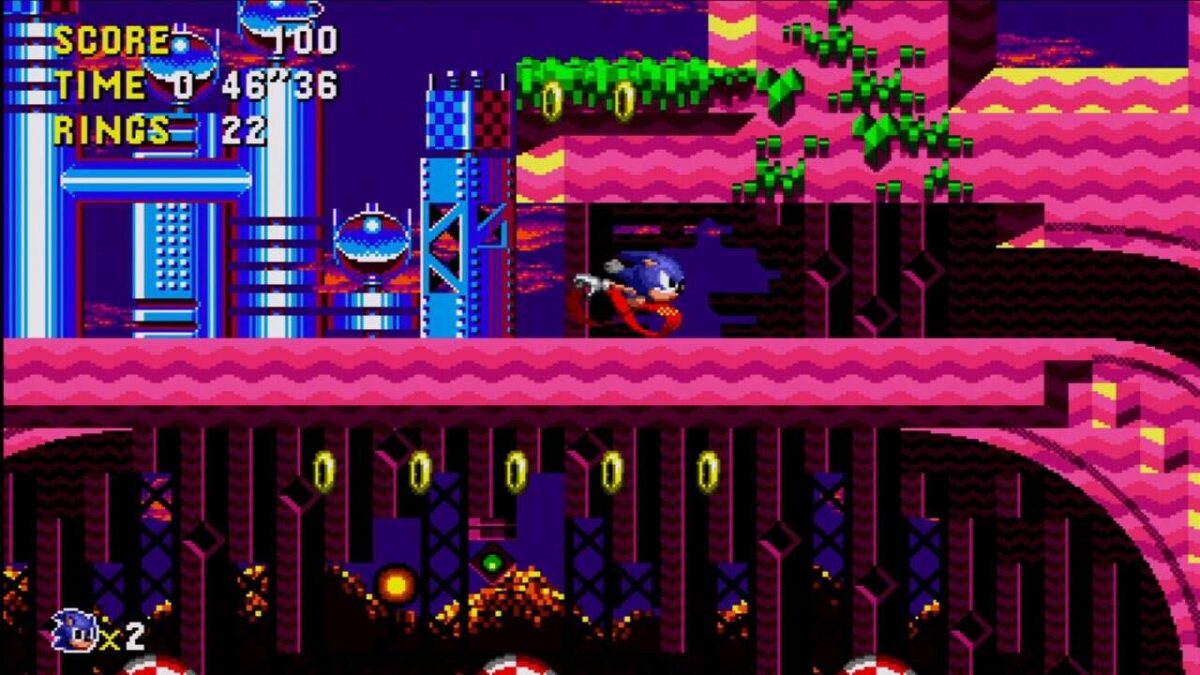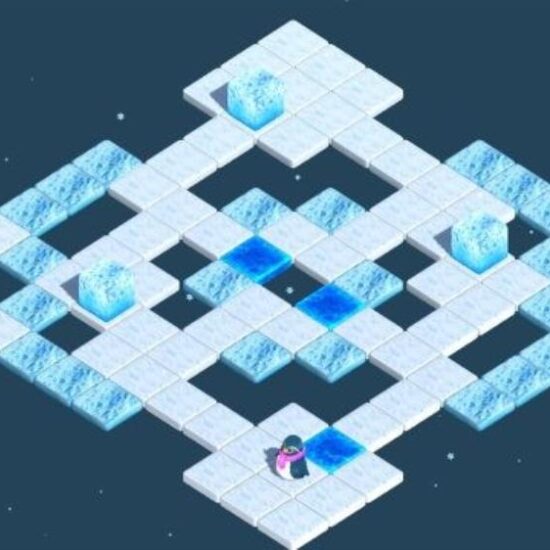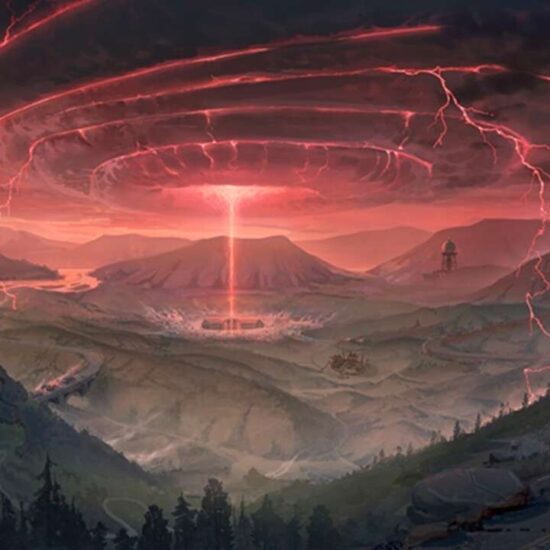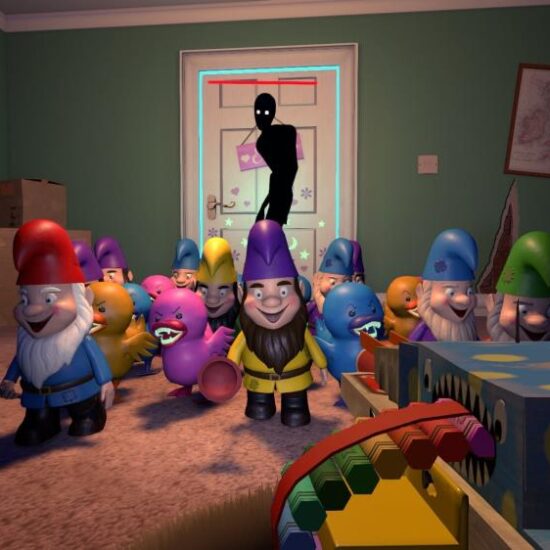
Sonic CD is celebrating its 30-year anniversary today, September 23, 2023. Below, we look back at how its experimental ideas influenced the series going forward.
Trying to get a group of Sonic fans to agree on anything related to the franchise is hard enough, but asking for their feelings about Sonic CD might get you more divided responses than any other game in the series. Out of all the classic Sonic titles, CD stands out as a very strange outlier in its game design–which leads to some very strong opinions from the fandom. But the reasons why it’s so different from its cartridge-based brothers are themselves fascinating. In many ways–and quite fittingly, given its time-travel theme–Sonic CD feels like the start of a different evolutionary path the Sonic series could have taken into the future, but didn’t.
After the first Sonic the Hedgehog became a runaway success, Sega immediately went to work on follow-up games. Two of Sonic’s primary development staff, Yuji Naka and Hirokazu Yasuhara, joined future PlayStation console architect Mark Cerny at Sega Technical Institute with a few other Japanese staff in the US to create Sonic the Hedgehog 2–a very unusual America/Japan co-production for its time. Meanwhile, other original Sonic Team members stayed back home in Japan to plan a Sonic game for the fledgling Mega-CD (Sega CD in western markets) add-on. The system was floundering in its home market but looked likely to do significantly better abroad, much in the same way the Mega Drive (aka the Genesis) had. With Nintendo poised to release its own CD system add-on, having a show-stopper like Sonic on its CD platform would be a tremendous boon in what looked to be the upcoming CD-ROM wars. (Which never happened, but hindsight is 20/20.)
Initial ideas for Sonic CD included an enhanced remake of the original game, in a similar vein to several other Mega-CD titles, but this was quickly abandoned. After all, Sonic was a proven system-seller, and presumably an all-new Sonic game taking full advantage of the hardware would help move more pricey Sega CD systems across the globe. (I personally wanted a Sega CD the moment I knew that Sonic was coming!) In the era before online communication and cross-continental development through the internet was feasible, the communication between the two Sonic development teams was limited, leading to a sort of Galapagos effect: Gameplay ideas, visual identity, and technical knowhow developed very differently between the Japanese Sonic CD team and the US-based Sonic 2 team.
That’s not to say there wasn’t any contact between the two, however; in the planning stages for both games, the teams did share their basic game concepts with each other. One of the key gameplay elements of Sonic CD, time travel, was indeed planned for Sonic 2 initially, as revealed by Hirokazu Yasuhara. It’s unclear whether the Japan or US team came up with the idea first–or even devised it independently of one another–but it was quickly dropped for Sonic 2. Instead, Sonic CD would utilize the additional CD-ROM storage space to create multiple variations of each level in different time periods. In addition, the stages would be presented as though Sonic were moving through a day and seeing more and more of Dr. Eggman’s corrupting influence in each level. While this didn’t work out in quite the way the developers planned initially, due to the removal of a stage early in development, you can still see remnants of it in the final game.
Sonic Superstars – Multiplayer Trailer
Please use a html5 video capable browser to watch videos.
This video has an invalid file format.
Sorry, but you can’t access this content!
Please enter your date of birth to view this video
By clicking ‘enter’, you agree to GameSpot’s
Terms of Use and Privacy Policy
The time-travel concept would be the main crux of design for Sonic CD. Sonic would move between time periods by building up enough speed to transition, taking him into the past and good or bad futures. Level layouts and stage gimmicks would be similar but different across time periods: A hollow log found in the past would be partially rotted away in the present and all but gone in the future. Robotic enemies looking freshly built in the past would be half-broken and worn-down in the far-future level variations. Each time period would also have its own unique visual design and soundtrack–with the fun touch that the past stages would use hardware-generated sound instead of redbook audio, though that also wasn’t the initial plan.
To facilitate the time-travel mechanic and create multiple variations of each stage, Sonic CD’s level design wound up being drastically different from what STI was working on in Sonic 2. Sonic 2’s levels featured a variety of speed gimmicks and were mostly-linear: There were multiple paths through each stage, but once you decided on a path, you were mostly stuck on it. Sonic CD’s levels, in contrast, were more crowded but also less restrictive: If you wanted to backtrack and explore every inch of every stage in every time period, you absolutely could. In fact, you probably wanted to, since finding areas to work up the appropriate speed to time-warp could often be quite challenging.
Stage gimmicks in Sonic CD also have an air of wild experimentation. There’s plenty of design elements here that don’t show up in any other classic Sonic… well, until Sonic Mania, but even that didn’t use everything. There’s foreground/background shifting, bouncy brass-tubing tunnels, weird spinning pistons, thick walls of glass spheres that smash with a satisfying break sound, and, of course, the notorious electrified floor in Wacky Workbench that, when touched at particular times, launches Sonic straight up to the ceiling. (Wacky Workbench in particular often gets called out as a bad Sonic Zone, but I adore its sheer audacity–what other platform game would attempt such a bizarre gimmick?) Every stage and every time zone is packed with unique quirks for you to experience that make exploration the ideal way to play. Sonic CD didn’t lack the fun speed and momentum of other Sonic games, but it wasn’t afraid to make you slow down and encourage you to explore more thoroughly–which some Sonic fans find runs counter to what they enjoy about the games.
Not only does taking the time to comb through the levels reveal lots of fun little secrets and playful gimmicks–alongside giving you an opportunity to find the device Eggman’s using to make a bad future–it lets you take in the gorgeous visuals, as well. The Mega CD was a powerful add-on, but it couldn’t make up for one of the shortcomings of the original Genesis/Mega Drive hardware: the limitations on on-screen colors. Many games on the system have a reputation for looking grainy and washed-out compared to contemporary SNES titles, but looking at many stages of Sonic CD, you wouldn’t know that there was a hard, 64-color display limit. (Of course the bad future stages did have that grimy, dull-colored look, contrasting perfectly to create a feeling of despair and misery.) Sonic CD art director Hiroyuki Kawaguchi and art designer Kazuyuki Hoshino’s visuals fit in perfectly with Sega of Japan’s early-’90s aesthetic of high-tech, brightly-colored geometry and computer graphics.
Sonic 2 would release in late 1992, as the Sonic CD team was preparing the first build of the game to showcase at an event called Yuusei Sega World. The finished game would release in the summer of 1993 in Japan, but not before going through numerous revisions, with small changes happening up until the eleventh hour. As is typical for game development, ideas were scaled back and altered: The special stage went from an expanded Sonic 1 rotating arena to popping balloons to chasing down UFOs (which changed shape numerous times), the Past soundtracks dropped the redbook audio, the time-travel interstitial screen went through multiple visual and audio effects–but perhaps the biggest omission is the stage known as R2. When going through the game’s stage select, the zone numbers jump from 1 to 3, indicating that what was planned for stage 2 was cut at some point. Development images of vague underground ruins have tantalized fans for years, but despite many re-releases filled with development-related extras, there’s still surprisingly little info about what was planned. Over the years, fans have sought out and preserved numerous development builds of Sonic CD, which provide a fascinating set of snapshots into the game’s development.
There is so much worth talking about with Sonic CD–the introduction of Amy Rose and Metal Sonic, the controversy over the North American release’s music replacement, the various reissues–but its distinctive design, unlike any other Sonic title of the era (and the result of strange circumstances) is what’s made it most memorable. While it didn’t move millions of Mega-CD units like Sega had hoped, its aesthetic design has come to define classic Sonic, and it remains a much-discussed game among fans. With Sonic Superstars bringing back Sonic CD director in a design role, and some OG Sonic CD staff still working at Sega, I’m quite eager to see how much Sonic CD influence can be seen in Superstars. Maybe we’ll see those Wacky Workbench floors come back… I can’t be the only person who’d love that, right?
The products discussed here were independently chosen by our editors.
GameSpot may get a share of the revenue if you buy anything featured on our site.














